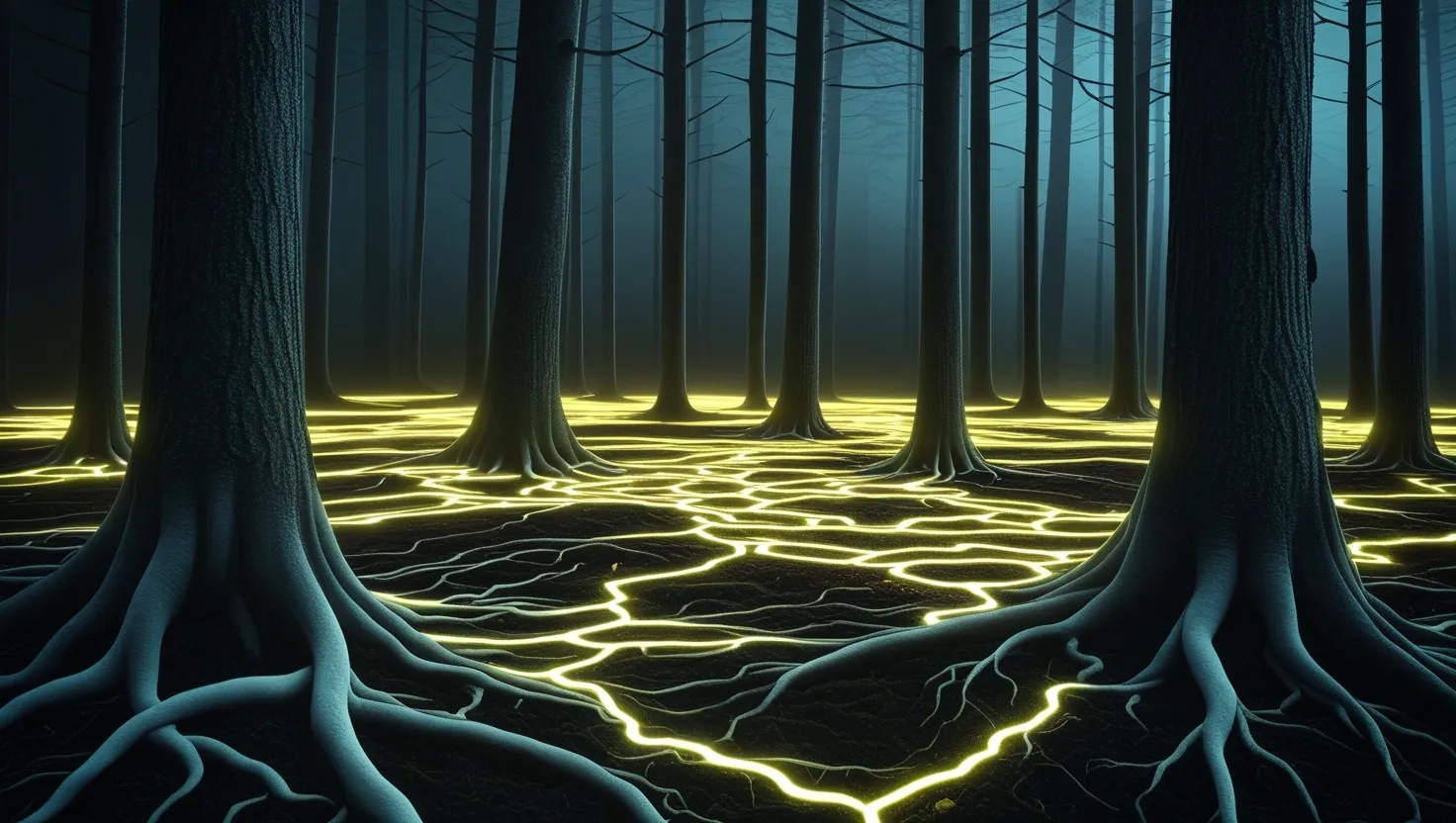As you walk through a forest, the rustling of leaves and the chirping of birds are familiar sounds, but there’s a silent, intricate world beneath your feet that’s just as fascinating. This is the realm of the mycorrhizal network, a vast web of fungal threads known as mycelium that interconnects trees and other plants in a way that’s both complex and mysterious.
Imagine a network that allows trees to communicate and share resources, much like how we use the internet to exchange information. This concept, often referred to as the “woodwide web,” was popularized by German forester Peter Wohlleben. Here, trees are not solitary entities but are connected through tiny fungal threads called mycelium. These threads wrap around or bore into tree roots, forming a network that enables the transfer of water, nitrogen, carbon, and other essential minerals.
In healthy forests, each tree is linked to its neighbors through this mycorrhizal network. For instance, saplings growing in shady areas, where sunlight is scarce, rely on older, taller trees for nutrients and sugar. These older trees, often called “mother trees,” have deeper roots that can access water and nutrients from deeper soil layers, which they then share with their younger counterparts. This symbiotic relationship is crucial for the survival and health of the forest ecosystem.
But how does this network work? The fungi in this system are motivated by their own need for carbon. They retain about 30% of the sugar produced by the trees through photosynthesis, using it to fuel their own growth and collect phosphorus and other minerals. This mutual benefit ensures that both the trees and the fungi thrive. For example, when a tree is under stress or ill, it can send distress signals through the mycorrhizal network, and nearby trees can respond by sending it the necessary nutrients.
The complexity of this network goes beyond simple resource sharing. Recent studies have discovered that fungal mycelium networks exhibit electrical activity, similar to the neural networks in our brains. These electrical signals, including action-potential spikes, allow the fungi to communicate and transfer information. This electrical activity is so sophisticated that it can be compared to the complex internal communication systems found in animals and plants.
Researchers have even explored the idea that these fungal networks could be used as computing devices. Fungal mycelium, such as that of the pink oyster mushroom, can resolve complex computational geometry problems by changing their environmental conditions and using their electrical activity to create computing circuits. This concept is part of a broader field of research known as unconventional computing, where natural systems are used to perform computational tasks.
One of the most intriguing aspects of these fungal networks is their ability to recognize and respond to their environment. A study published recently showed that a wood-decaying mycelial network can adjust its growth based on the shape of its surroundings. For example, when wood blocks were arranged in a circle or a cross, the mycelium adapted its connections accordingly, indicating a level of decision-making and problem-solving that is surprising for an organism without a brain.
This level of intelligence in fungi challenges our traditional view of cognition. Fungi can learn, remember, and make decisions based on their environment. They grow by releasing spores that form long, interconnected threads underground, allowing them to share information across the network. This basal cognition is not just about instinct; it involves complex internal processes that are still not fully understood.
The idea that mycelium could be acting as a quantum information highway is a fascinating one. Researchers are exploring how quantum biology, high-performance computing, and machine learning can be used to optimize nutrient transfer in these fungal networks. Quantum algorithms, such as QAOA and VQE, are being used to simulate nutrient tunneling and protein folding, which could explain how mycorrhizal fungi maintain efficient nutrient exchange even under environmental stress.
This interdisciplinary approach envisions a future where fungal networks play a crucial role in sustainable agriculture and ecosystem management. By understanding how these networks operate, we can develop precision-engineered fungal strains that enhance crop health and reduce the reliance on chemical fertilizers. This could also improve the soil’s capacity for carbon capture, supporting both food security and environmental stewardship.
But what if this network is more than just a local phenomenon? Could it be part of a larger, cosmic network? While this idea might sound like science fiction, it’s an intriguing possibility. If fungi can communicate and share resources over vast distances, what other forms of life might be connected in similar ways? The notion that we are walking on a living, thinking supercomputer every time we step into a forest is both exhilarating and humbling.
As we continue to explore the mysteries of the mycorrhizal network, we are forced to question everything we thought we knew about the natural world. The hidden connections in nature are far more complex and sophisticated than we ever imagined. Whether or not this network is influencing evolution or connecting to a larger cosmic web, one thing is clear: the world beneath our feet is a vibrant, interconnected ecosystem that deserves our respect and understanding.
In the end, the mycorrhizal network is not just a fascinating scientific discovery; it’s a reminder of the interconnectedness of all living things. As we delve deeper into this earthy enigma, we may uncover secrets that challenge our current understanding of life and intelligence. So, the next time you walk through a forest, take a moment to appreciate the silent, hidden world that’s working tirelessly beneath your feet – a world that might just be the most sophisticated communication system on Earth.






